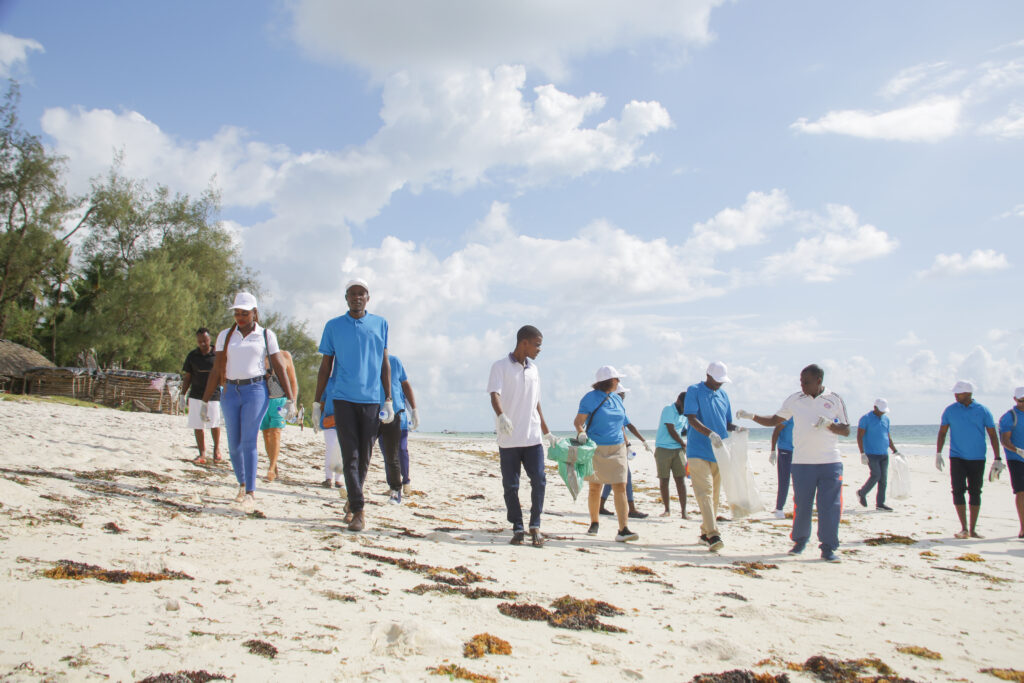By Caroline Katana
For more than 100 million years sea turtles have covered vast distances across the world’s oceans, filling a vital role in the balance of marine habitats.
Seven different species of sea turtles grace the ocean waters, from the shallow seagrass beds of the Indian Ocean to the colorful reefs of the Coral Triangle and the sandy beaches of the Eastern Pacific.
While these highly migratory species periodically come to the shore to either bask or nest, sea turtles spend the bulk of their lives in the ocean.
Over the last 200 years, human activities have tipped the scales against the survival of these ancient mariners, slaughtered for their eggs, meat, skin, and shells, sea turtles suffer from poaching and over-exploitation.
They also face habitat destruction and accidental capture known as bycatch in fishing gear.
Climate change has an impact on turtle nesting sites, it alters sand temperatures, which then affects the sex of hatchlings.
Nearly all species of sea turtles are now classified as endangered, with three of the seven existing species being critically endangered.
The population of the sea has decreased by two-thirds overall with about 6.5 million remaining globally today.
Speaking during a turtle conservation drive in Bidibadu Beach, Diani, Kwale county SBM Bank-Kenya Deputy CEO Jotham Mutoka said, the bank is stepping up efforts in environmental conservation in the face of increasing human and climate threats across the coastal region.
“We are keen on taking a leadership position in driving sustainability initiatives in line with the bank’s key tenets around responsible business, inclusive communities, and sustainable growth,” said Mutoka.
The deputy CEO noted that SBM Bank-Kenya has reaffirmed its commitment to championing the conservation of endangered species and critical ecosystems as part of its vital role in driving Kenya’s agenda on sustainability, biodiversity, and environmental conservation.
The exercise which was preceded by a beach clean-up, was conducted in partnership with Diani Turtle Watch, to boost the turtle population as part of long-term sustainability efforts.
According to Diani Turtle Watch Project Manager Dempsey Mai, sea turtles help in maintaining marine ecosystems.
“Sea turtles are very few species globally but they have a unique character that attracts tourists like hawksbill turtles ensure slow growth of corals while the green turtles balance the number of seagrasses because they feed on vegetation,” noted Mai.
Diani Turtle Watch exemplifies the power of community action in driving impactful change.
“We do monitoring nesting sites, relocating vulnerable nests, collecting data, and nurturing hatchings,” said Halima Shiling who is Diani Turtle Watch Coordinator.
Shilingi affirmed that they’re working closely with the community on turtle conservation.
“Communities are the first people to see when turtles hatch, so we’re informing them the importance of having turtles and why it’s important to keep the beach clean for the turtles to hatch in a safe environment,” she added.
Diani Turtle Watch is now calling upon communities to safeguard turtles for tourist attractions that will open job opportunities and revenue for the county government of Kwale.
There are seven species of turtles globally while Diani hosts five of the seven sea turtle species, green turtle, olive ridley turtle, hawksbill turtle, leatherback turtle, and loggerhead turtle.
As migratory species that travel thousands of miles, their protection requires collaborative efforts between nesting sites, feeding grounds, and migratory routes.


